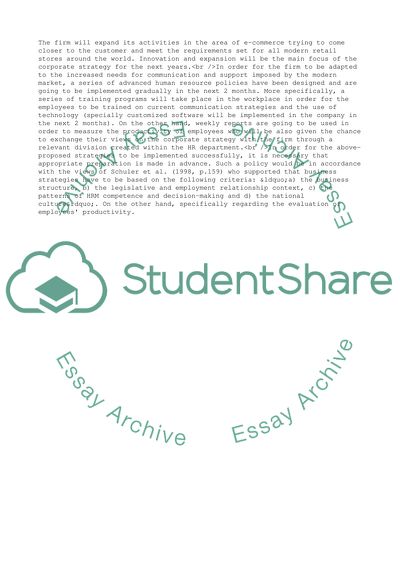Cite this document
(Strategic Human Resource Management Assignment Example | Topics and Well Written Essays - 2750 words, n.d.)
Strategic Human Resource Management Assignment Example | Topics and Well Written Essays - 2750 words. https://studentshare.org/management/1707170-strategic-human-r-esource-ma-nagement
Strategic Human Resource Management Assignment Example | Topics and Well Written Essays - 2750 words. https://studentshare.org/management/1707170-strategic-human-r-esource-ma-nagement
(Strategic Human Resource Management Assignment Example | Topics and Well Written Essays - 2750 Words)
Strategic Human Resource Management Assignment Example | Topics and Well Written Essays - 2750 Words. https://studentshare.org/management/1707170-strategic-human-r-esource-ma-nagement.
Strategic Human Resource Management Assignment Example | Topics and Well Written Essays - 2750 Words. https://studentshare.org/management/1707170-strategic-human-r-esource-ma-nagement.
“Strategic Human Resource Management Assignment Example | Topics and Well Written Essays - 2750 Words”. https://studentshare.org/management/1707170-strategic-human-r-esource-ma-nagement.


